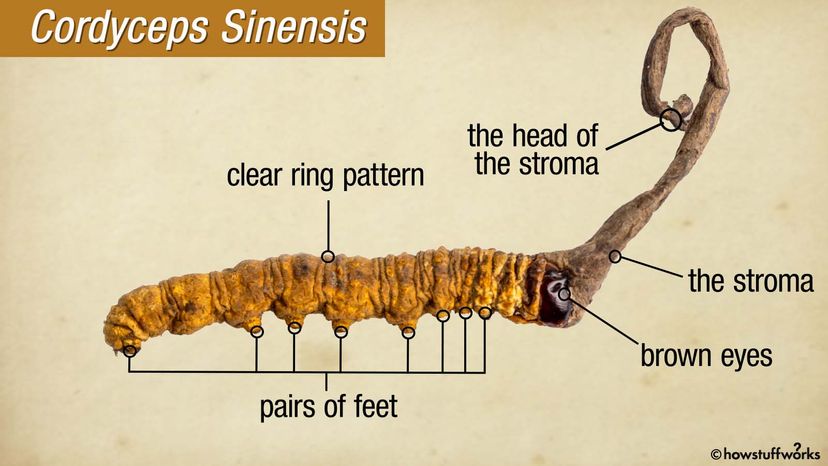A quick Google search unearths dozens of "Cordyceps supplements" in the form of tinctures, powders, pills and teas. These may contain cordycepin, the same active ingredient in O. sinensis, but they are most likely not made with wild O. sinensis fungi. This is primarily because O. sinensis demands such a high price.
When demand skyrocketed in the 1980s, scientists and supplement manufacturers in China found ways to cultivate cordyceps anamorphs, essentially mycelium (where cordycepin is found) that do not produce fruiting bodies. These anamorphs, known as cordyceps Cs-4, have been found to be similar to O. sinensis grown in the wild.
"On one level, these are different organisms, not even in the same family, but they share some of the active ingredients," ethno-mycologist Daniel Winkler, who runs Mushroaming.com, says via email. In 2007, Cordyceps sinensis and several other cordyceps were moved from the genus Cordyceps to the genus Ophiocordyceps. "If you buy Ophiocordyceps sinensis in a supplement store in the West, these products do not contain O. sinensis but Paecilomyces sinensis, a related fungus living within the wild Ophiocordyceps sinensis."
"Most medical research has been carried out using this fungus known as Cs-4 (cordyceps sinensis strain No. 4)," with promising results, Winkler says. "But recently DNA analyses revealed this strain not to be identical to Ophiocordyceps sinensis."
In the United States, some manufacturers have developed ways to grow cordyceps on grain, referred to as cordyceps militaris. From this they create cordyceps mushroom extracts that are promoted for similar health benefits as O. sinensis.
The species cordyceps militaris has been found to have anti-fatigue effects in mice. Other studies — also only on mice — found that extracts of cordyceps sinesis and cordyceps militaris improved brain function and boosted antioxidative enzyme activity, which could fight cell damage that comes with aging. Cordyceps sinesis also improved the sexual function of castrated rats. More studies need to be performed to know whether the same results would be replicated in humans.
Other studies have shown it difficult to determine how much mycelium or cordycepin is actually in cordyceps militaris. Some supplements that contain cordyceps militaris tout the benefits of their products by using cordyceps Cs-4 research, which is misleading.
And limited government oversight of supplements further muddies the water, making it difficult for consumers to know whether the products they buy actually contain the active ingredient or dosage listed on the label. In short, you should research to determine if a supplement is authentic and trustworthy.
It is also important to note that while Wang Junxia's 1993 athletic performance may have been aided by her use of caterpillar fungus, there may have been other factors in play. In 2016, she admitted that during her best running season when she broke the world record, she was involved in a Chinese state-sponsored doping regime.



